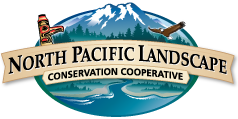Factors Influencing Seasonal Migrations of Pronghorn Across the Northern Sagebrush Steppe
Meeting Date: 9/14/2016
- 9/14/2016
Location: Webinar
Website: Website
Date and Time: Sept 14, 2016 12-1 pm Mountain / 11 am -12 pm Pacific
Hosts: Great Northern and Plains and Prairie Potholes Landscape Conservation Cooperatives
Speaker: Andrew Jakes, University of Montana
Globally, grassland systems have received the highest impacts from human activities, and therefore management of these systems is important for ungulate conservation. Pronghorn (Antilocapra americana) may undertake seasonal migrations to satisfy annual life history requirements. The effects from environmental gradients and anthropogenic factors on pronghorn migrations are not well understood.
This webinar will provide an overview of the study that addresses these objectives:
- Classify and determine metrics for migration behaviors across individuals in the Northern Sagebrush Steppe (NSS);
- Predict multi-scale seasonal pronghorn migration pathways across the NSS and integrate scales into one map and;
- Create pronghorn connectivity network maps for the region.
Because pronghorn are well distributed across the landscape, move and operate at large landscape scales, are sensitive to both environmental and anthropogenic pressures and are highly regarded in public perception, I suggest that the pronghorn is a focal species useful for conservation planning across the NSS.
About the presenter: Andrew has worked on pronghorn for over eight years. He completed his PhD in Environmental Design at the University of Calgary in 2015 and is currently a post-doctoral researcher at the University of Montana, working on wildlife-fence interactions. He received a B.S. in Biology from James Madison University, VA (1998) and a M.S. in Biology from Towson University, MD (2001).
If you miss the webinar, a recording will be available on the Great Northern LCC webinar webpage and YouTube Channel.
